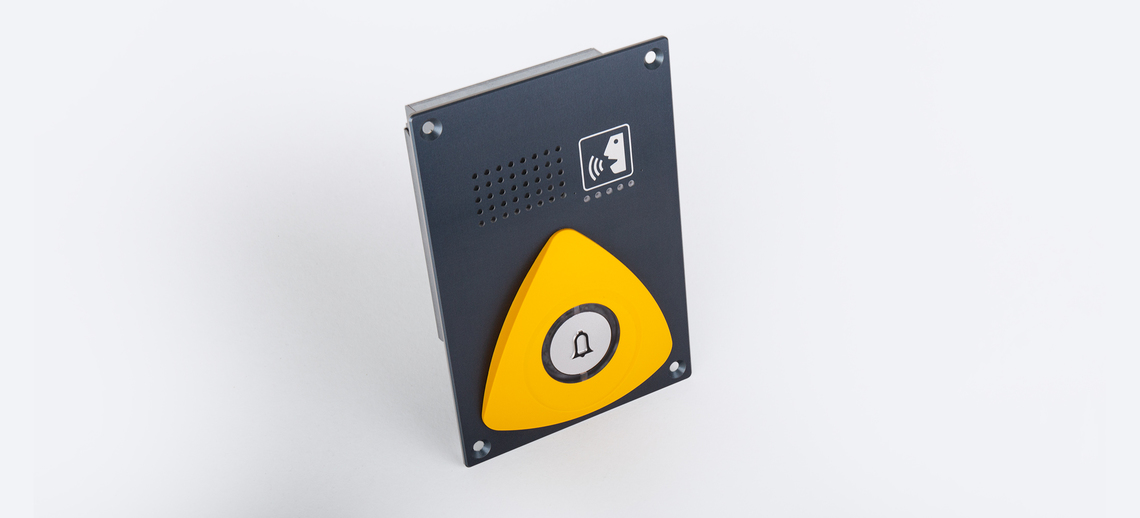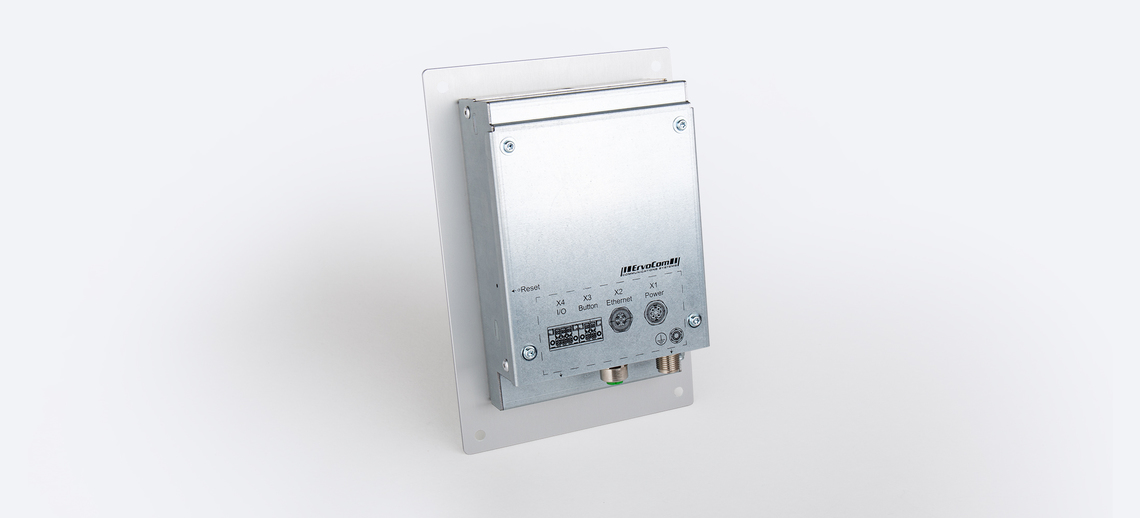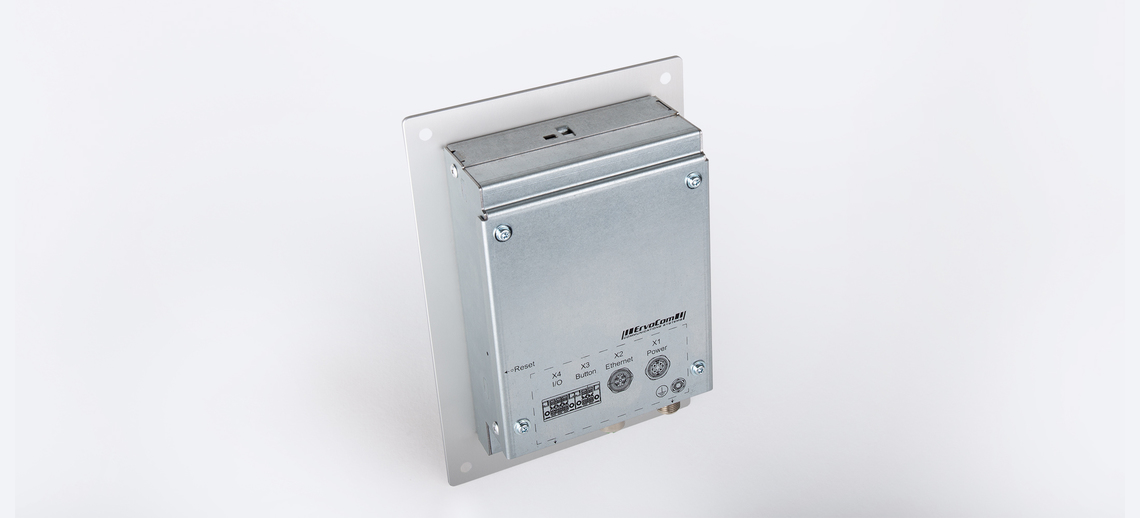Call for Aid Intercom HRSS2197
The call for aid intercom HRSS2197 is the communication interface between the passengers and the transport service provider. This intercom can be used to contact the locomotive driver, train attendant or operations center. The voice transmission is purely digital via VoIP-SIP, employing only leading transmission technology, while ensuring at the same time outstanding audio quality.
Download
With its slim design, the HRSS2197 call for aid intercom can be conveniently integrated into the train, even when space is limited. The face of the unit impresses with its simple and clear design, which emphasises important elements such as the button controls and at the same time discreetly integrates loudspeakers and microphones into the front. Functional aspects, such as protection against vandalism, are a part of the design philosophy.
Voice communication to the HRSS2197 is digital via the Ethernet port on the rear, which can also be used for powering the device (Power-Over-Ethernet). For the decoding of the audio data, the device supports leading industry standard audio codecs, configurable to meet customer requirements. By using state-of-the-art audio processors, feedback from the loudspeaker as well as ambient noise can be eliminated to deliver audio quality when it counts most. This allows the HRSS2197 to provide excellent speech intelligibility for both parties, even at high speeds with high ambient noise levels.
In addition to its use in voice communications, the microphone unit can also be used as a measuring ambient noise for neighbouring audio systems, allowing them to adapt their volume levels according to an everchanging, noisy environment. The microphone determines a sound pressure level, which is transmitted via an Ethernet interface to interconnected systems. These measured values can be used as a basis for dynamic volume control of the audio amplifiers.
To initialize a call, the passenger only has to press the button in the middle of the intercom. All call states are displayed intuitively by the call station, by means of acoustic signalling and visually via LED's, whereby no further instructions are required.
Contact
Advantages
- Outstanding voice quality due to integrated echo cancellation and noise reduction
- Highest protection against vandalism, courtesy of pentration guards and anodised plate printing.
- Digital voice communication via VoIP-SIP
- Provides ambient noise measurement for other systems
- Power supply via POE (Power-over-Ethernet) or external +36 VDC voltage
- Digital input port for external inputs such as the emergency brake and additional remote button
- Large push-button, extruded with braille to assist the visually impaired
- Acoustic and visual call state feedback via LED bar, illuminated push-button ring and loudspeaker
- EN 50155, EN 45545-2, TSI-PRM certification
References
- Stadler Rail (SBB) Passenger information for new Stadler Flirt TSI trains for SBB
- Passenger Information Tramway du Mont-Blanc Passenger information system for new Stadler trains for Tramway du Mont-Blanc
- Stadler Rail (SBB) Passenger information system for new Stadler IR-Dosto trains for SBB
- Stadler Rail (SBB) Passenger information system for new Stadler FLIRT trains for SBB






